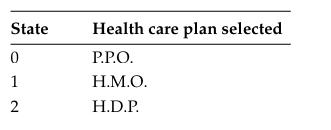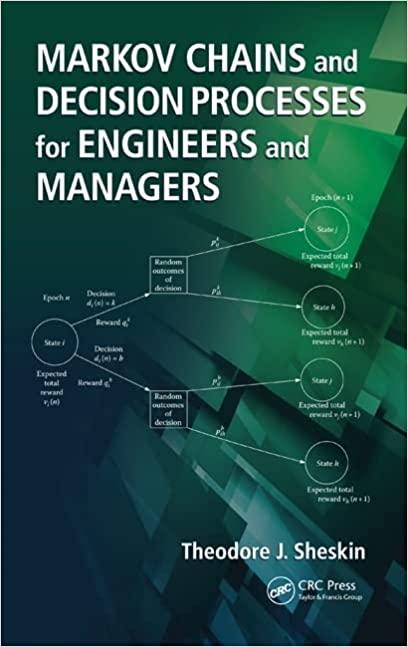Every December 15, a certain company offers its employees a choice of one of the following three
Question:
Every December 15, a certain company offers its employees a choice of one of the following three health care plans for the new year beginning on January 1:

An employee may keep her current plan or switch to a different plan. During the past several years the Human Resources Department (HRD) has compiled the following data on the numbers of employees who have switched health care plans:

The HRD believes that the choice of a health care plan by an employee can be modeled as a three-state recurrent Markov chain. They let the state Xn be the health care plan selected at 
the end of year n. The three states are identified below: The HRD has estimated that the company incurs the following administrative costs for each employee who switches her health care plan.
(a) Model the choice of a health care plan by an employee as a three-state recurrent MCR. Construct the transition probability matrix and the cost vector.
(b) Execute value iteration to find the vector of expected total costs that the company will incur for every health care plan after 3 years. Assume zero terminal rewards at the end of year 3.
(c) Find the company’s expected average cost, or negative gain.
(d) Find the company’s vector of expected total discounted costs using a discount factor of α = 0.9. Suppose that the HRD has proposed that the company try to reduce its administrative costs by offering all employees a cash incentive of $D to stay with their current health care plan rather than switch plans. The goal of the HRD proposal is to increase by 0.06 the probability that an employee will stay with her current plan, and to decrease by 0.03 the probability that she will switch to either of the other two plans.
(e) Assume that the desired modified probabilities of switching health care plans can be achieved by offering cash incentives of \($D\) to each employee. Find the value of \($D\) for which the expected total costs of the original policy and the policy proposed by the HRD are the same.
Step by Step Answer:

Markov Chains And Decision Processes For Engineers And Manager
ISBN: 9781420051117
1st Edition
Authors: Theodore J. Sheskin





